Wooden screens: types and tips for use
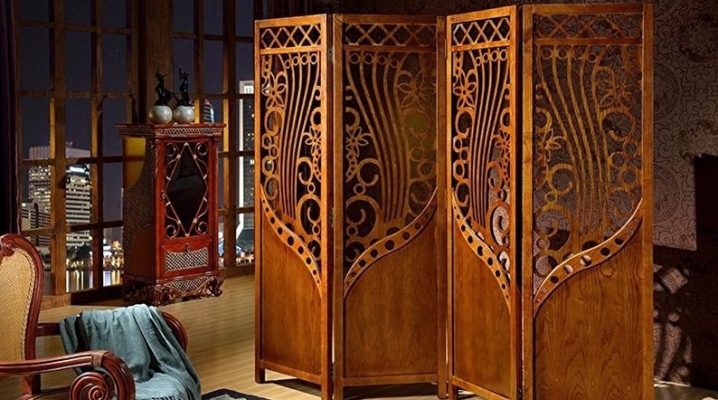
For several centuries, partition screens have been widely used to equip a functional interior: they were installed both in poor huts and in rich houses. Screens are experiencing a new surge in popularity these days. The simplest and most affordable way to divide the space of a residential building and an apartment is wooden partitions.
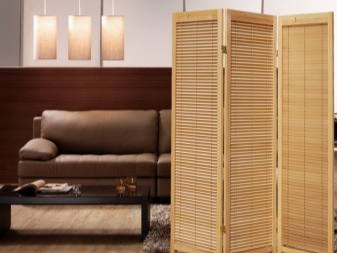
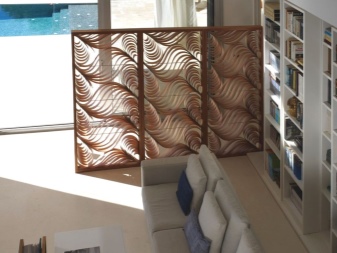
Advantages and disadvantages
Often in living quarters there is a need to organize home space in such a way that it meets the needs of all family members as much as possible. It is this task that screens-partitions answer: if you correctly arrange the division into zones, then the room will visually become more comfortable and spacious.
The advantages of wooden partitions are undeniable:
- ergonomics - if the partition is not used, then it can always be folded in the manner of a folding accordion, in this case it will take up very little space;
- mobility - if you wish, you can always rearrange the partition from one place to another;
- low price - the cost of the finished partition will be much lower than the cost of creating an additional wall, and if you have certain skills in working with wood, you can always make it yourself;
- a wide range of design solutions - you can always choose the version of the screen that will harmoniously fit into the overall interior of the room;
- the possibility of increasing the working functionality - for this you just need to supplement the partition with shelves or pockets;
- variety of types, sizes and shapes.
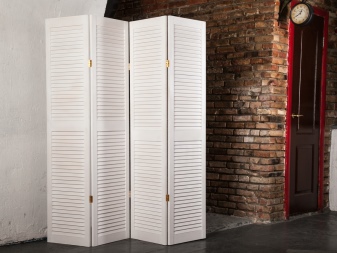
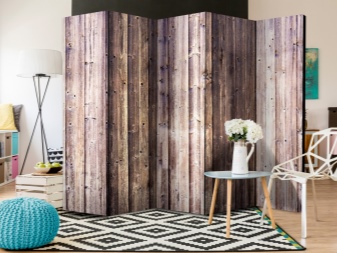
Do not forget about the advantages of the wood itself:
- it is an environmentally friendly material, thanks to which a room with such a partition will be safe for households;
- the tree lends itself well to any type of processing, therefore, the partition-screen can always be decorated with decorative carvings, which will give the room an individual style and create its own atmosphere of comfort;
- the tree can easily withstand attachments weighing up to 100 kg;
- in case of any decorative damage, the partition can be easily repaired: for this you just need to wipe the damaged area with sandpaper and varnish.
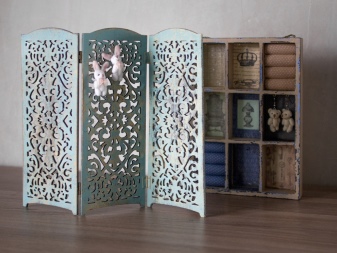

However, screens have their own drawbacks, namely:
- limited zoning - the allocation of functional areas is purely visual, so the screen cannot prevent people from entering the fenced space;
- weak stability - this parameter directly depends on the opening angle of the flaps, so maximum stability can be achieved if the angle is 90 degrees;
- low noise insulation.
Do not forget that wood does not like moisture, so if you plan to install wooden screens indoors, you should maintain a certain microclimate in the room, and when installing screens in the kitchen, bathroom or shower room, the material must first be treated with special water-repellent compounds.
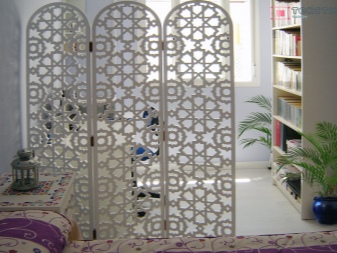

Species overview
When it comes to zoning an apartment and private houses, the first thing that comes to mind is a blinds screen. but such a partition is far from the only option, we will dwell on each of them separately.
Foldable
The traditional version of the wooden partition is the accordion. It consists of several decorative canvases that are attached to each other with hinges.The number of doors is limited only by the size of the room, although most often they are made in such structures 3-4. As for the size of the shutters, their height can vary from 1.5 to 1.8 m, the optimal width of each leaf is 40-60 cm. Of course, these values are only recommended, but, as user experience shows, these sizes are the most comfortable.
A wooden folding screen can be made in two versions: in one, the canvases are made entirely of wood, in the second, only the frame is made of wood and covered with fabric, leather or plastic.
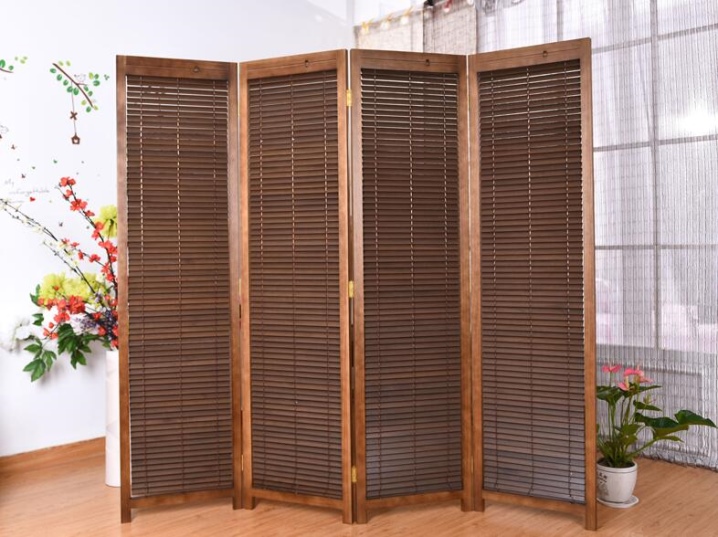
Single screen
This type of partitions consists of a single sash, therefore the main disadvantage of such screens follows from this - they cannot be folded. However, this disadvantage is very conditional, since such a design does not require a lot of space, while at the same time it copes with its functional duties at 100%. Single-screen screens create the illusion of a low wall in a room; they are often used in offices where they divide one large room into several workplaces.
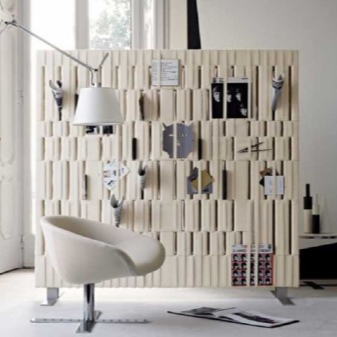
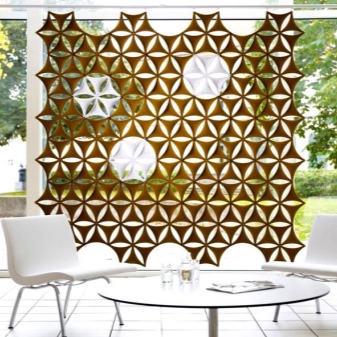
Flexible
As the name suggests, this type of screen differs from the classic partitions. The basis of this model is made up of wooden vertical supports, between which a canvas of flexible material is stretched - it is located horizontally. Due to the design features, the screen can take on the most unusual shapes, if desired, it can be rolled up and removed.
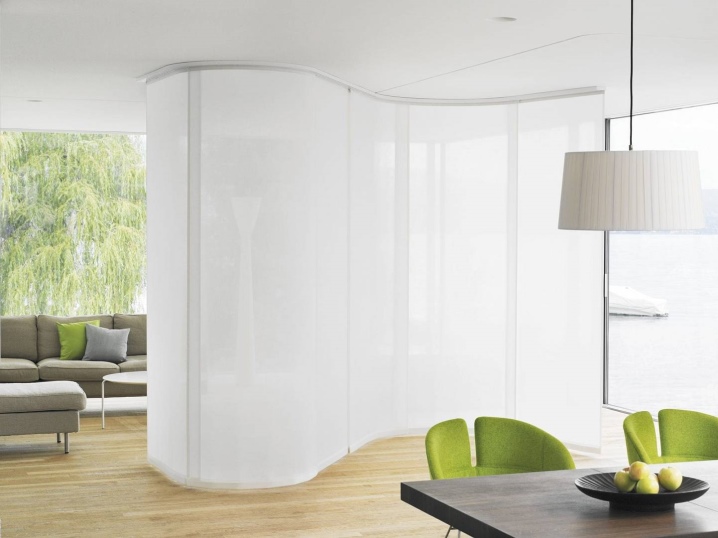
Design options
The popularity of screens-partitions is growing every year, in many respects this is facilitated by a wide range in terms of a variety of configurations, sizes and design ideas. However, remember that since the partition is one of the basic items of the interior interior, it must exactly correspond to the basic concept of the room design and fit organically into the environment.
So, in a classic style, laconic forms and expensive wood, possibly complemented by forging, will be appropriate.
Partitions with carved elements, gilding and leather inserts look especially expensive.

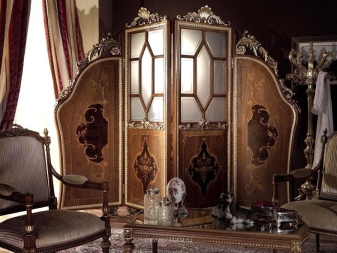
A Japanese-style partition is most often a wood frame covered with a fabric, in some cases stylized as rice paper. In ancient times, pictures on screens in the land of the rising sun were considered an object of art, and this is reflected in the design decisions of our days. Of course, you will hardly see real handmade work on the free market, but the use of modern technologies allows you to apply no less exquisite images, such as cherry blossoms or a hieroglyph.

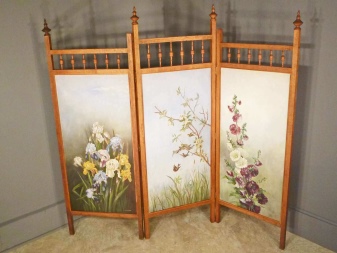
Modern trends in high-tech and minimalism presuppose the maximum openness of space, which is why the screen is of particular importance here. The partition must certainly be extremely laconic with the correct geometry, there is no place for bright decoration and flowing shapes.

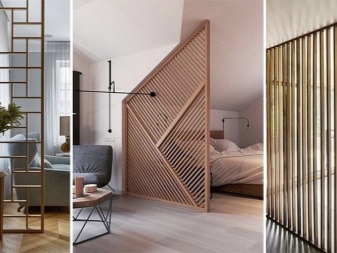
The tandem of rustic simplicity and truly French sophistication is the main characteristic of the interior in the spirit of Provence. Partitions made of wood of light shades will be appropriate here; the use of the aging effect is allowed.
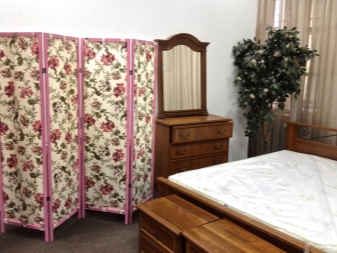
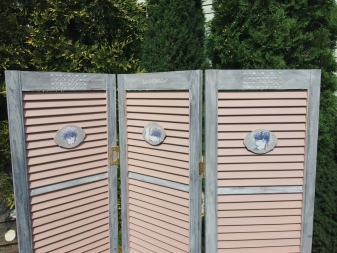
The complete opposite is interiors for a loft, they involve a demonstration of bare bricks, concrete walls, pipes and other engineering communications. Accordingly, the screen in such a room must be selected more massive, preferably made of wood and metal, always with a rough finish.
Since the decor in such rooms is usually abstract canvases on the walls, as well as photographs and posters in black and white, the screen can also be decorated in the same style, a good solution would be to place pictures of road signs, various inscriptions and modern European ones on the canvases. streets.
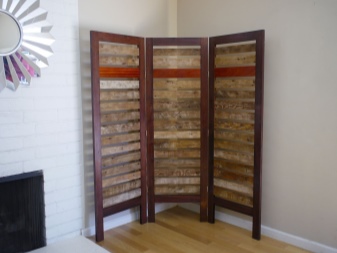
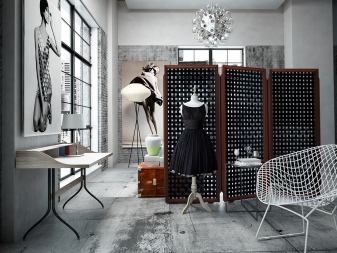
Where can you use it?
Most often, screens are installed in the living room, where they divide a large room into several functional zones for different purposes. However, this is far from the only possibility of using the screen in the interior.
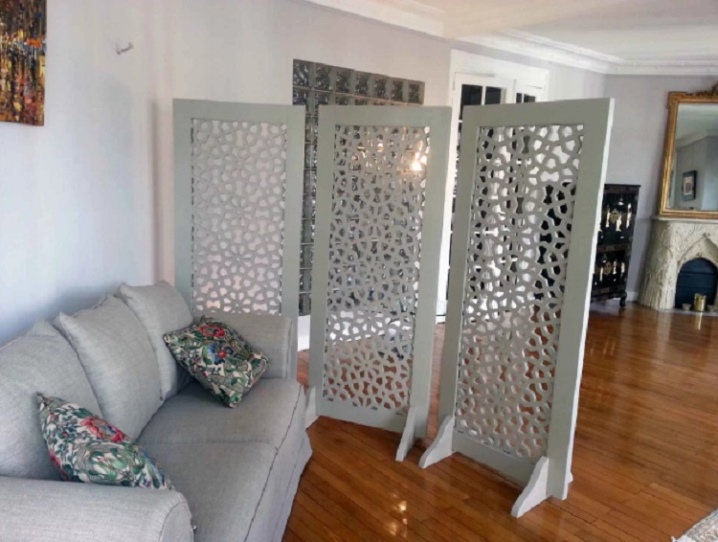
Partitions are often installed in bedrooms, where they perform two main functions: decorative and functional. In most cases, the screen in the bedroom is designed to divide the room into two main zones: a place to sleep and a change of clothes.
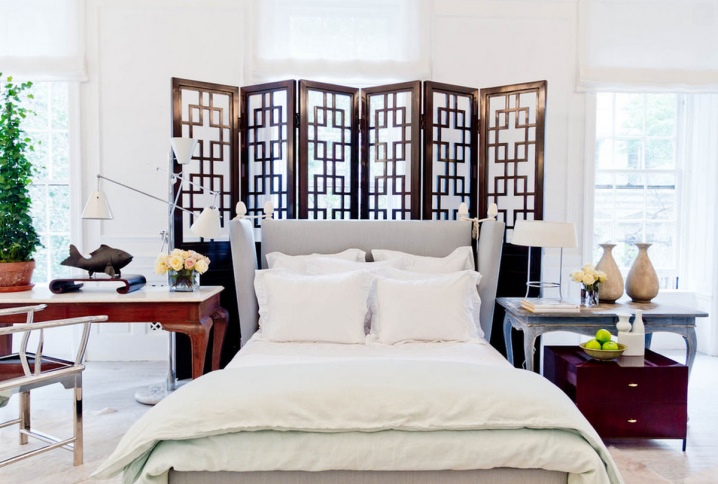
Decorative structures act as a kind of interior decoration, as a rule, these are partitions resembling panels, most often they are placed next to the bed, giving the bedroom a feeling of fullness.
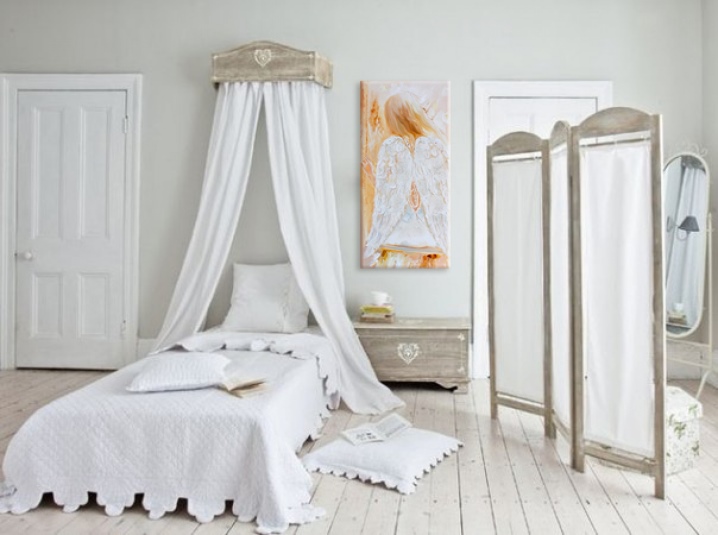
The screen can also be installed in shower rooms. Of course, in this case we are talking about private houses, since it is impossible to install a partition in a typical apartment - in multi-storey buildings this room is too small. In individual buildings, the bathtub is often located in a large space, so it must be fenced off.

Installation of partitions in children's rooms is no less popular. There, the screens perform one and only function - they separate the sleeping area from the play area, most often a blind screen is mounted here.

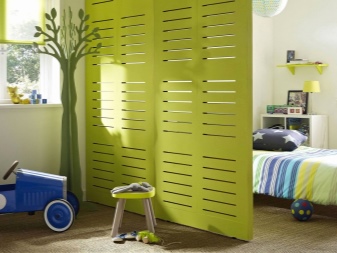
How to make a screen with your own hands, see the video below.













The comment was sent successfully.